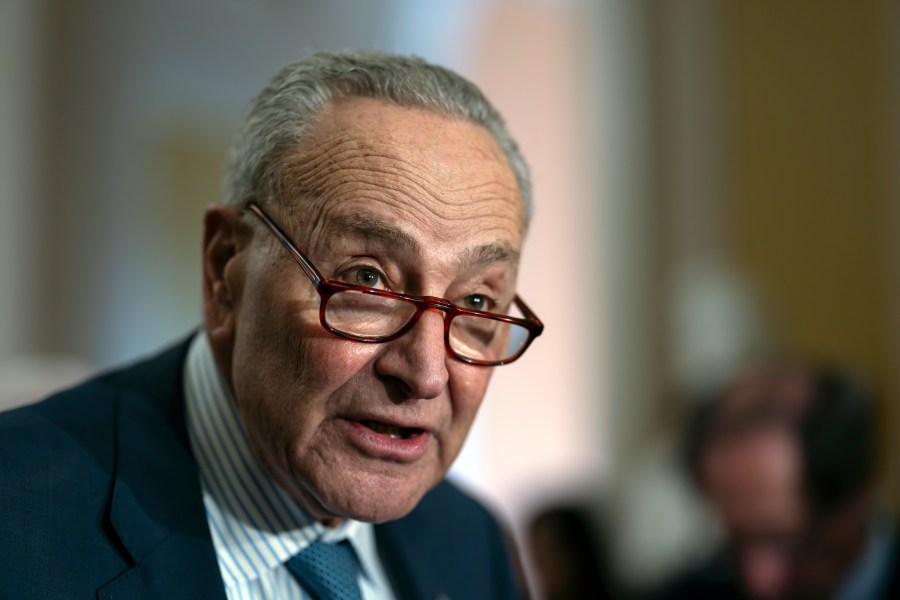Shouldn’t polluters, not taxpayers, pay for disaster assistance?

More than 40 U.S. cities and states have sued oil companies in recent years, attempting to recover the costs of climate-related weather disasters and mitigation measures. Eleven states have passed “climate superfund laws” with the same goal.
President Trump calls these actions “ideologically motivated” and has told the Justice Department to fight them. He also wants to eliminate federal disaster programs and shift the costs of weather catastrophes to states. He apparently believes that if we ignore climate change, it will go away.
It won’t. And whichever level of government takes responsibility for uninsured disaster damages, taxpayers ultimately foot the bill.
There is a more equitable approach based on the “polluter-pays principle” — a sensible idea in international environmental law that says that polluters, not their victims, should pay for the damage their products cause. In the case of fossil fuels, the polluters producers, consumers and governments that subsidize them.
Fossil-energy companies, determined to avoid responsibility, have been using the tobacco industry’s obfuscation playbook. In the 1990s, Big Tobacco knew from its own studies that smoking caused cancer. Its spokespersons and executives denied it, lied about it under oath and refused accountability.
But Big Oil knows how that worked out. State attorneys general sued the largest tobacco companies to recover the public costs of treating smoking-related illnesses. In 1998, 52 states and territories reached a settlement in which Big Tobacco agreed to pay states billions of dollars annually in perpetuity. Last year, the payments totaled nearly $7 billion.
The polluter-pays principle is a less litigious solution that mobilizes market forces against climate-altering pollution, whose effects are expensive. The federal government currently authorizes approximately $60 billion for annual disaster relief.
Trump has said he wants to get rid of FEMA, which has very effective programs but is sometimes criticized for taking too long to deliver aid. Instead, Trump and Congress should redesign federal disaster relief by attaching a user fee to the price of fossil fuels and dedicating the revenues to disaster prevention, response and recovery.
FEMA would distribute the money to states in “formula grants” based on population and the agency’s National Risk Index. States would qualify for the funds by submitting annual mitigation, response and recovery plans for FEMA’s approval. This is how the U.S. Department of Energy administers the government’s State Energy Program.
Allowing states to manage funds would eliminate federal delays. The fee would obligate fossil fuel consumers to pay for some of the social and environmental damage their pollution causes. It would help correct the market distortion currently caused by excluding the real costs of fossil fuels from their prices. Instead of externalized costs, the fee would produce externalized benefits, ranging from lower inflation to cleaner air and improved public health.
How much would a user fee cost, and how much revenue would it generate? When Congress considered a price on carbon in 2012, analysts figured that a fee of $25 per metric ton of carbon would generate about $125 billion annually. The fee would have added 21 cents to a gallon of gasoline and 1.2 cents to a kilowatt of electricity. That fee would encourage consumers to use energy efficiently and to adopt clean technologies, such as heat pumps and rooftop solar systems. It would also better align the national energy economy with greenhouse gas reduction goals. A price on carbon is the most efficient way to do it.
Congress could eliminate still another market distortion by repealing fossil fuel subsidies. Estimates vary widely, ranging from $10 billion to $52 billion annually. The new revenues could be used to help fossil fuel workers and company towns through the nation’s energy transition.
FEMA would continue the core functions best provided at the national level, and establish a user-friendly portal to help disaster victims access the government’s other relevant programs. The agency would train and certify state and local emergency managers. It would continue to operate the Integrated Public Alert and Warning System. It would provide technical assistance in disaster response and recovery to smaller states and communities that lack in-house experts. And it would review and approve annual state plans for prevention, response and recovery.
Meanwhile, the president could also revive the National Climate Assessment — call it the Long-Term National Weather Assessment, if we must — to help communities, insurers and policymakers anticipate risks.
The nation cannot cope with intensifying weather disasters without the federal government’s backing. Trump’s response is badly out of step with the American people and their needs. More than 70 percent of adults accept that global warming is happening; nearly half expect it to threaten their way of life.
And they have good reason to worry. More than 4 million Americans were displaced from their homes by extreme weather last year. More than 40 million live in river floodplains. An additional 2.5 million people and 1.4 million homes are expected to be at risk of sea-level rise over the next 25 years. The First Street Foundation warns that climate change could erase $1.4 trillion in U.S. real estate value over the next three decades.
However, all Americans are victims as their insurance premiums and tax bills rise, and as climate change puts upward pressure on inflation. And, as the no place in the U.S. will be spared from global warming’s escalating physical impacts.
Trump and the current Congress will not take this approach. They are the oil industry’s loyal submissives. But maybe the next president and Congress will.
William S. Becker is co-editor of and a contributor to “Democracy Unchained: How to Rebuild Government for the People,” and contributor to Democracy in a Hotter Time, named by the journal Nature as one of 2023’s five best science books. He previously served as a senior official in the Wisconsin Department of Justice and is currently executive director of the Presidential Climate Action Project, a nonpartisan climate policy think tank unaffiliated with the White House.